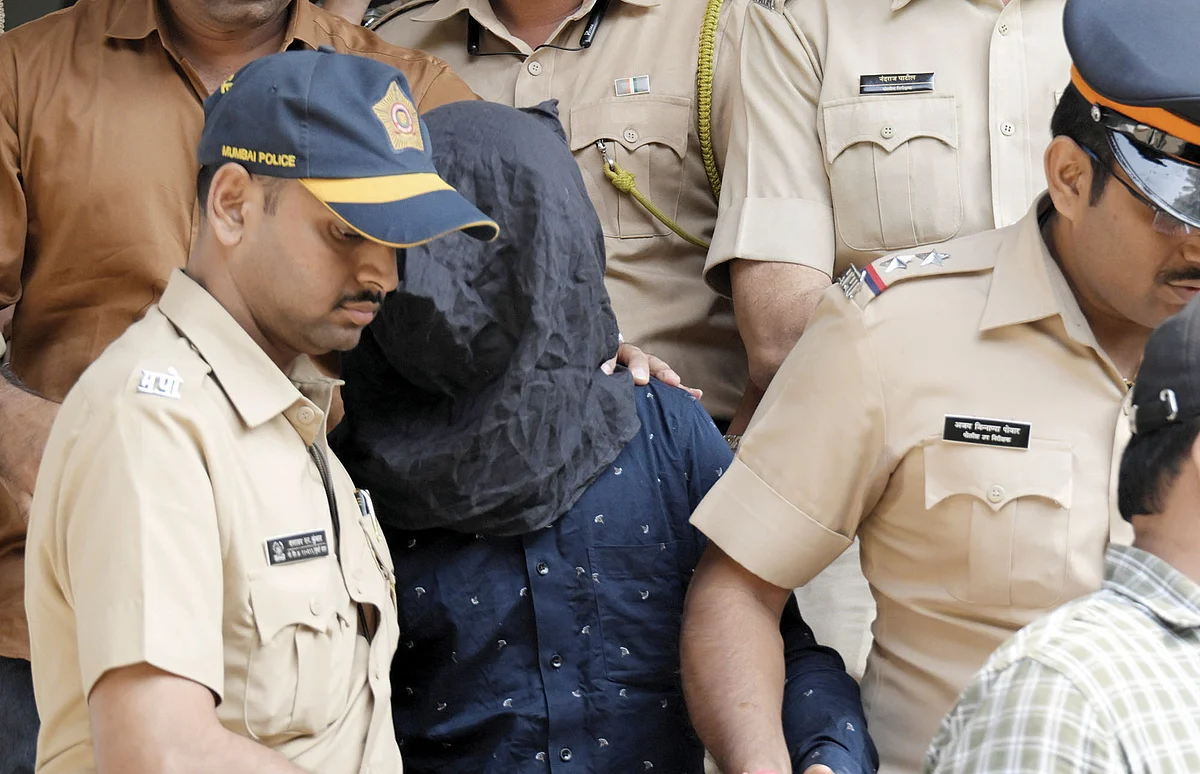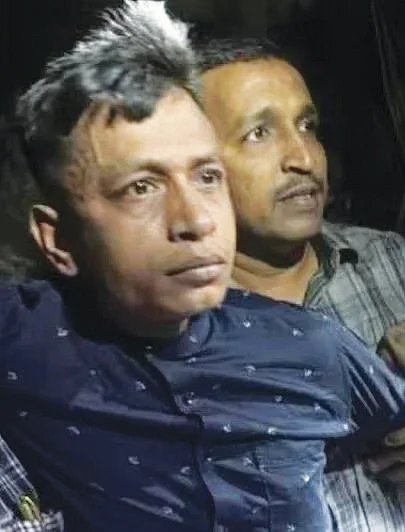Saif attack: The incredible story of a mysterious ‘robber’ from Bangladesh
To add further intrigue, investigating officer Sudarshan Gaikwad was replaced by Ajay Linganurkar after ‘Shehzad’ was arrested

It was apparently an ‘illegal Bangladeshi infiltrator’ who came to India six-odd months ago, assumed a Hindu name and worked for builders, in pubs and as housekeeping staff who stabbed actor Saif Ali Khan around 2 a.m. on 16 January.
The motive, we’re told, was robbery — but he didn’t pick up the jewellery lying in the open, according to statements recorded by the police.
That wasn’t the only discordant note in the reconstructed story that surfaced after Shariful Islam Shehzad was arrested on 18 January from Thane, 32 kilometres from Bandra, and identified by his birth certificate and other Bangladeshi documents stored in his mobile phone.
He apparently used the phone to regularly call his family back home in Bangladesh. The call records enabled the police to find out that he belonged to Jhalokathi in the Barisal division of Bangladesh.
It is not clear yet whether the Bangladesh government has shared more details of the antecedents of the 30-year-old and whether he had links with the Awami League, whose followers are currently being hounded there after the ouster of the Sheikh Hasina government in August 2024.
Shehzad, claimed the police, was hiding in Thane because he had worked there and was familiar with the place. Why he chose the posh Sadguru Sharan building in upscale Bandra — or Saif Ali Khan, for that matter — is still a mystery. According to the police, he scaled the boundary wall after finding the guards fast asleep. The investigators insist he had no idea whose house he was about to rob.
Sceptics in Mumbai scoff at the explanation that he broke through a window, cut the wire mesh and hid in a duct. Highly improbable by most accounts in a quality construction of the kind Sadguru Builders have a reputation for.
But police say the fingerprints match.

CCTV camera footage caught the intruder’s face as he walked down the staircase around 2:20 a.m. Police had flashed the image in the hope of nabbing the culprit and it did lead them to Shehzad, who had disposed of his clothes and gone for a haircut to avoid detection. But as photographs of Shehzad were splashed in the media, people began to doubt that the arrested Bangladeshi was the same man seen in the CCTV footage.
Shehzad is said to have admitted that he stabbed the actor to free himself from his tight hold. But two media outlets, Dainik Bhaskar and Mumbai News, reported that forensic experts had also pointed out discrepancies.
The nose of one was sharper than the other, the forehead broader, the gaps between the two eyebrows different. Even the eyes reportedly did not match, the shape of the mouth was different and one looked stockier than the other, according to the reports.
Mid-Day, a city newspaper, in a report acknowledged that ‘doubts persist’, but quoted both police and forensic experts straining to dispel those doubts. It also reported that the police claims to have used AI and facial recognition technologies to zero in on the culprit.

Forensic experts told Mid-Day that CCTV footage often distorts images due to factors such as camera angles and insufficient lighting. Camera specs also matter and advanced surveillance cameras can even detect people through their gait and body structure.
Credible or not, the story of the amateur Bangladeshi robber’s high-profile misadventure has served the BJP well, as seen in the chorus to identify and deport all illegal Bangladeshis from Maharashtra and Mumbai. Shiv Sena MP Milind Deora demanded an audit of Bangladeshis in ‘Maximum City’ to keep it safe.
BJP stalwart Kirit Somaiya, who had caused a stir before the assembly election by claiming that research had found Bangladeshis would overtake the local population in Mumbai by 2047, felt vindicated.
In faraway Delhi, the BJP taunted former chief minister Arvind Kejriwal, who is accused by the BJP of legitimising illegal Rohingya Muslim migrants by settling them in the national capital: ‘Don’t tell us we didn’t warn you.’
Amateur sleuths remain sceptical of the fanciful police narrative of a Bangladeshi illegal migrant, five months in the city, reaching the 12th floor of a posh building — and the residence of a high-profile celeb, no less — to ‘hide’ and ‘demand’ Rs 1 crore...
Police claim Shehzad hid in the Sadguru Sharan garden for two hours after attacking Saif; then walked to the bus stand to take a nap for two more hours; moved from Bandra to Worli and then to Dadar to buy a mobile cover — but for almost 70 hours after the attack, he did not switch off his mobile phone, doing so only hours before he was nabbed.
To add intrigue to an already incredible story, investigating officer Sudarshan Gaikwad was replaced by Ajay Linganurkar after Shehzad had been arrested, with no explanation offered. It was unusual, retired police officers agreed on TV, especially after the team had cracked the case within three days.
Bandra has been in the headlines for the wrong reasons over the past five or so months. Someone fired at Salman Khan’s bungalow, someone else carried out a reconnaissance of Shah Rukh Khan’s bungalow the night Saif Ali Khan was attacked and just ahead of the assembly election in November 2024, NCP leader Baba Siddiqui, a ‘friend’ of both Salman and Shah Rukh, was shot dead. Fingers were pointed at the builders’ lobby, but the police were quick to blame the ‘Lawrence Bishnoi gang’ for the killing. Not everyone is convinced.
Follow us on: Facebook, Twitter, Google News, Instagram
Join our official telegram channel (@nationalherald) and stay updated with the latest headlines
